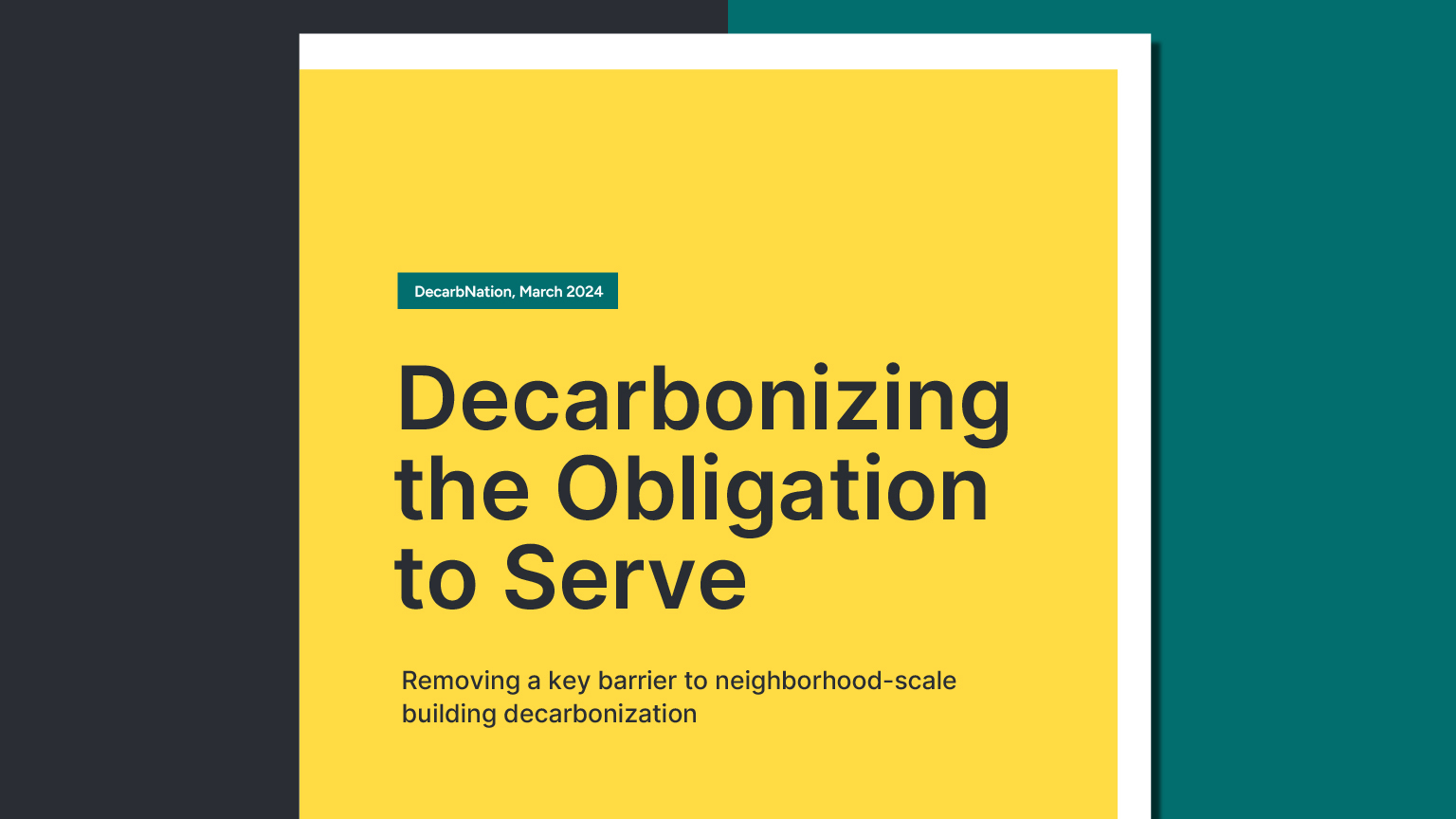
Decarbonizing the Obligation to Serve
Removing a key barrier to neighborhood-scale building decarbonization
A DecarbNation report
by Kristin George Bagdanov, Mgr. Policy Research & Knowledge Sharing
In some states, the “obligation to serve” is a statute that is only ten words long: “Every public utility shall furnish adequate, efficient, and reasonable service.” In other states, it’s detailed across multiple sections of the public utilities code, with additional caveats and dependencies. If this obligation sounds ambiguous–and lacking clarity whether it applies to electric service, gas service, or both–that’s because it often is. So what exactly is the obligation to serve and why has it recently garnered so much attention from utilities, regulators, and advocates in the building decarbonization movement?
In the case of regulated energy utilities, the obligation to serve ensures that utilities offer service to anyone who requests it in their service territory. These utilities make this commitment in exchange for the privileges they enjoy as a monopoly, such as control over a market, access to public property, and rights of way. This obligation has two distinct channels: the extension of service to new customers (which can be subsidized through line extension allowances) and the continuation of service once it begins. The same opportunities and challenges that accompany the decarbonization of new versus existing buildings apply to addressing these prongs–it’s much harder to retrofit a building and it’s more complex to remove service.
Depending on how the obligation to serve it is written and interpreted, it can prevent neighborhood-scale decarbonization—a managed and coordinated approach to building decarbonization that entails pruning the gas system. Utilities embarking on neighborhood-scale electrification or thermal energy networks cite their fear of a potential “holdout” customer who refuses to relinquish their existing gas service. This refusal threatens the cost-effectiveness of a neighborhood-scale decarbonization project by requiring the continued maintenance of an entire segment of the gas system or adequate compensation.

Recent calls to modify, or decarbonize, the obligation to serve seek to maintain its positive attributes (access, nondiscrimination, safety, etc.) while removing its fossil fuel attributes. In other words, the goal is to remove the statute’s fuel-specificity—the obligation to serve gas specifically—and clarify that an alternative service such as electricity and/or thermal energy may serve as an acceptable substitute for all gas end-uses.
This deep-dive report situates, defines, and analyzes the obligation to serve across the U.S. and recommends a course of action for how and when to modify this statute in order to enable neighborhood-scale building decarbonization. When done right, this newly decarbonized obligation can pave the way to clean energy infrastructure powered by renewable electricity and thermal energy, while also protecting consumers’ access to affordable energy.

